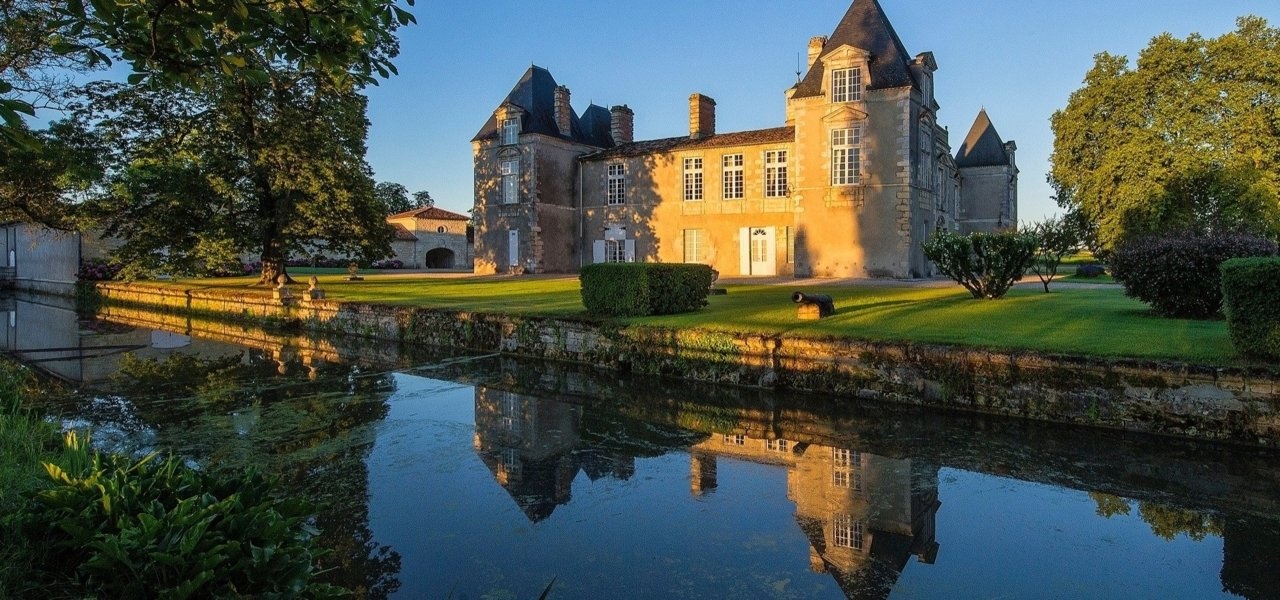Spotlight on Chateau d'Issan in Margaux

Over a period of nearly three centuries, the chateau was passed down along a line involving a number of families. From 1575 onwards, the property was owned by five generations of the Essenault family, who ended up renaming it, contracting their name to “Issan” and thus Château d’Issan was born...

Château d’Issan didn't need the famous 1855 classification distinguishing it as a 3rd Grand Cru Classé to establish its reputation. This was already made back in the 12th century, when it was reported to have been served at the wedding of Eleanor of Aquitaine and Henri Plantagenet, future King of England on the 18th of May, 1152. In 1787, Thomas Jefferson, still to become President of the United States, included it in his famous selection of Bordeaux estates
At the end of the 19th century, Château d’Issan was invited to the Court of Austria, having become the favourite wine of Emperor Franz-Joseph. He coined the estate’s motto engraved in cut stone above the door of the chateau: “Regum mensis aris que deorum”(For the table of kings and the altar of Gods).

During the period between the two World Wars, the estate was unfortunately left to deteriorate, but was reawakened by the Cruse family, owners since 1945. Under the management of Lionel Cruse, the chateau had been restored, the installations modified and the vineyard replanted. Since 1998, as a result of investments made by Lionel’s son Emmanuel Cruse in the vines and cellars, Château d’Issan wines have become even more a of a faithful reflection of their exclusive terroir.
In 2012, Françoise and Jacky Lorenzetti, who also own Château Lilian Ladouys in Saint-Estèphe and Château Pedesclaux in Pauillac, joined forces with the Cruse family. With tenacity, passion and courage, the different generations have worked to achieve the renewal of Château d’Issan, which has regained its former glory.

Chateau d'Issan wines
Chateau d'Issan: Château d’Issan is a Third Growth of the 1855 Imperial Classification. The wine is made from the old vines in the Château d’Issan enclosure in the middle of the Margaux appellation. The soil here is mainly made up of surface gravel on top of a clay subsoil, which contributes to optimal ripeness and freshness in the two grape varieties, Cabernet Sauvignon and Merlot. Château d’Issan expresses the exquisite bouquet so characteristic of Margaux, and stands out with its suppleness, subtlety, elegance and ageing potential that come from its unique terroir. Château d’Issan is aged in barrels for 16 to 18 months, half of which are new. Annual production is around 100,000 bottles.
What the critics say about Chateau d'Issan 2010: “ Emmanuel Cruse has done a superb job at this moated castle on the southern approach to the appellation of Margaux. The dense blue/purple-tinged 2010 reveals notes of violets, blue and black fruits, a striking minerality, excellent purity, texture and length, a medium to full-bodied mouthfeel and noticeable but sweet, well-integrated tannins. It should drink well in 5-6 years and last 25-35.” (94-96 pts) - Wine Advocate
Blason d'Issan: Blason d’Issan, their second wine, was introduced from 1995 onwards to enable selection amongst their vines growing in the Margaux appellation area. Fruit from their youngest vines is used to produce this wine, which respects the identity of its terroir, while offering a tasty round fruitiness, which can be enjoyed earlier. Blason d’Issan is also aged in barrels for 14 to 16 months, one third of which are new. Annual production is around 120,000 bottles.
What the critics say about Blason d'Issan 2016: "This wine has an austere structure, with firm tannins. The fruit comes through slowly, revealing an attractive black-currant flavour and ample acidity. This will be a very fine wine with time; try after 2029." (95 pts) - Wine Enthusiast
Haut-Médoc d'Issan: This wine is made from fruit grown on plots 5 km (3 miles) west of the estate in Arsac in the Haut-Médoc appellation area beside the vineyards of other Classed Growths. Le Haut-Médoc d’Issan has a limited annual production of about 18,000 bottles. It uses the dominant Medoc grape varieties, Cabernet Sauvignon and Merlot.
What the critics say about Haut-Médoc d'Issan 2016: "From the same winemaking team as Château d'Issan in Margaux, this wine has a sophisticated character. Ripe tannins and structure from Cabernet Sauvignon are perfumed with wood ageing. The wine is ready to drink." (92 pts) - Wine Enthusiast
Moulin d'Issan: The Bordeaux wine growing area is known for its variety of soil types and sub-soils. To the right of the historic path that leads to Château d’Issan are their Bordeaux Supérieur AOC plots. They are the closest to the Gironde Estuary. The soil there is mainly clayey limestone and therefore particularly suited to the Merlot grape variety, which dominates in this part of the vineyard. Generally, it contributes 90% of the blend, which is unique in the Medoc. The ruins of the old 17th century windmill, which gave this wine its name, are still in the middle of the vineyard. This wine expresses the richness, the suppleness and the fruit of its origins; it has been on the market since 1988. Its annual production is about 40,000 bottles.



